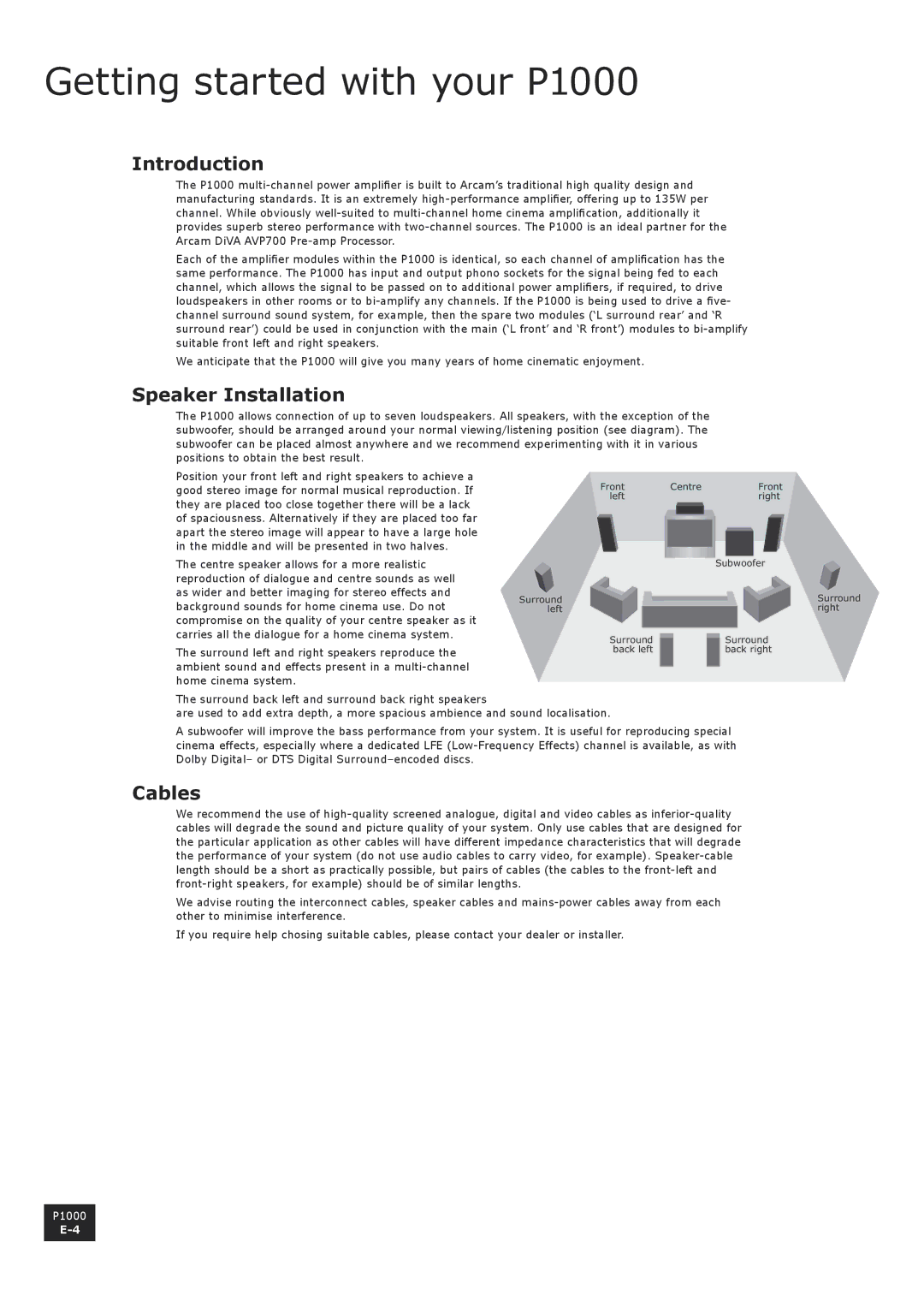P1000 specifications
The Arcam P1000 is a high-performance Stereo Power Amplifier designed to deliver exceptional sound quality and reliability for audiophiles and home theatre enthusiasts. With its sleek design and robust build, the P1000 exemplifies Arcam's commitment to excellence in audio engineering.One of the standout features of the P1000 is its advanced Class G amplifier technology. This innovative design allows the amplifier to efficiently switch between multiple power supplies, which ensures optimal sound quality while maintaining high output power. As a result, users can enjoy undistorted audio even at elevated volume levels. The P1000 delivers an impressive output of 100 watts per channel at 8 ohms and a substantial 200 watts per channel at 4 ohms, making it capable of driving a wide range of speakers with varying sensitivities.
The P1000 is equipped with intricate circuitry and high-quality components that minimize interference and noise, further enhancing the listening experience. It features a fully balanced input configuration, which significantly reduces common-mode noise and increases the overall signal integrity. The use of high-grade capacitors and resistors ensures longevity and reliability while delivering a dynamic and detailed sound.
Another noteworthy characteristic of the P1000 is its versatility. It includes a variety of input options to accommodate various audio sources. These include RCA and XLR inputs, allowing for seamless connections to different preamplifiers or home theatre receivers. Additionally, the amplifier has a trigger input that enables automated power-on when paired with compatible devices, enhancing convenience for users.
The design of the P1000 is both aesthetically pleasing and functional. Its sturdy chassis minimizes vibrations and contributes to the overall durability of the unit. The amplifier also features an easy-to-read front panel that includes LED indicators for operational status, providing users with quick visual feedback.
In summary, the Arcam P1000 stands out as a premier choice for those seeking an exceptional power amplifier. Its advanced Class G technology, robust output capabilities, high-quality components, and user-friendly design make it an excellent addition to any high-end audio setup. Whether you're an audiophile or a casual listener, the P1000 promises to deliver an immersive and faithful sound experience that will elevate your audio enjoyment to new heights.

